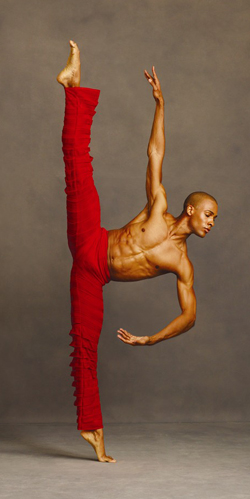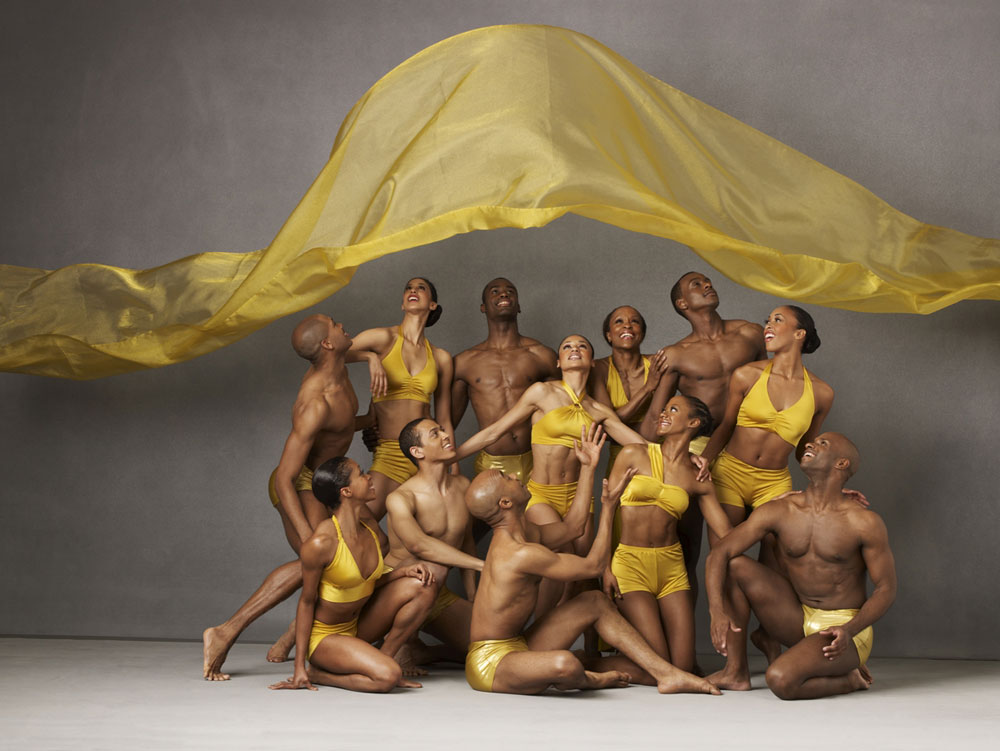|
Profiles > Philanthropy > Alvin Ailey Dance Foundation
|
| Alvin Ailey Dance Foundation |
 |
Alvin Ailey Dance Foundation is the umbrella organization that supports the activities of Alvin Ailey American Dance Theater, Ailey II, The Ailey School, Ailey Arts in Education & Community Programs and The Ailey Extension. Alvin Ailey Dance Foundation's mission is to further the pioneering work of Alvin Ailey by establishing an extended cultural community which provides dance performances, training and community programs for all people. This performing arts community plays an important social role using the beauty and humanity of the African American heritage and other
|
| cultures to unite people of all races, ages and backgrounds. Alvin Ailey Dance Foundation, Inc. is the umbrella organization for the Alvin Ailey American Dance Theater, one of the best-known modern dance companies in the United States. Founded by African-American dancer and choreographer Alvin Ailey in 1958, the company was one of the few showcases for black dancers anywhere in the United States. Headquartered in New York, the Alvin Ailey Company began touring internationally in 1962. The group has found a devoted following worldwide with its innovative dances, which often explore African-American culture in ways never previously seen. The Alvin Ailey American Dance Theater tours extensively abroad and in the United States. In addition, its junior company, known as Ailey II, tours and performs widely. The Ailey School teaches dance to thousands of students from the age of three (through adult). The school's curriculum is based on the dance techniques of Lester Horton and Martha Graham, and includes ballet, West African dance, and other dance techniques. The Alvin Ailey Dance Foundation also runs an extensive art in education program, bringing dance to schools through performances, workshops, and artist-in-residence programs. The foundation runs Ailey Camps as well, which teach dance and other skills to under-served children. The foundation is currently building a new home in New York City, which will be the largest facility devoted exclusively to dance in the United States.
|
|
|
| Revelations |
|
|
The Ailey Company became a recognized force in US dance with the success of Revelations. Unfortunately, the group had little money, and relied on the charity and volunteer work of friends and well-wishers. The Ailey Company's first headquarters was in a donated space at the YWCA on Eighth Avenue and 53rd
|
| Founded |
1958 |
| Headquarters |
New York, NY
|
| Type |
Domestic |
| Recent Year Revenue |
$39,100,000 (2012) |
| Charity Navigator |
62.31 / 70.00 (four stars) |
| BBB |
Accredited 20/20 |
| Charity Watch |
N/A |
| Executive Compensation |
$430,000 |
|
Street. The company rehearsed, taught classes, and performed in the small space at the Y, known as the Clark Center for the Arts. Ailey's reputation grew in New York, and in 1962 the State Department invited the company to tour Asia. The group spent three months abroad, performing in Australia, Korea, Japan, South Vietnam, the Philippines, Indonesia, Hong Kong, and elsewhere. Afterward, the company performed new dances in New York and traveled through the Midwest and South. In 1964, Alvin Ailey American Dance Theater toured Europe for the first time. The slew of engagements was handled by a booking agent, while the finances of the company were taken care of by a husband-and-wife team of devoted volunteers. Ailey stopped dancing himself during the mid-1960s and spent all his time on choreography and directing his group. He repeatedly announced that he would disband the company, even as its fame grew. In 1967 the company became a little more organized when it incorporated as a non-profit corporation, the Dance Theater Foundation. This way the group became eligible for government and foundation grants. The dance foundation's first office was in Ailey's small apartment.
|
|
| Programs / Areas of focus |
|
| Alvin Ailey American Dance Theater grew from a now-fabled performance in March 1958 at the 92nd Street Y in New York City. Led by Alvin Ailey and a group of young African-American modern dancers, that performance forever changed the perception of American dance. The Ailey Company has gone on to perform for an estimated 25 million people at theaters in 48 states and 71 countries on six continents -- as well as millions more through television broadcasts. In 2008, a US Congressional resolution designated the Company as “a vital American cultural ambassador to the world” that celebrates the uniqueness of the African-American cultural experience and the preservation and enrichment of the American modern dance heritage. When Mr. Ailey began creating dances, he drew upon his memories of Texas, the blues, spirituals, and gospel as inspiration, which resulted in the creation of his most popular and critically acclaimed work (Revelations). Although he created 79 ballets over his lifetime, Mr. Ailey maintained that his company was not exclusively a repository for his own work. Today, the Company continues Mr. Ailey's mission by presenting important works of the past and commissioning new ones. In all, more than 235 works by more than 90 choreographers have been part of the Ailey Company’s repertory. Before his untimely death in 1989, Alvin Ailey named Judith Jamison as his successor, and over the next 21 years, she brought the Company to unprecedented success. Ms. Jamison, in turn, personally selected Robert Battle to succeed her in 2011, and The New York Times declared that he has injected the company with new life. |
 |
|
|
Ailey II is universally renowned for merging the spirit and energy of the country’s best young dance talent with the passion and creative vision of today’s most outstanding emerging choreographers. Founded in 1974, the company embodies Mr. Ailey’s pioneering mission to establish an extended cultural community that provides dance performances, training, and community programs for all people. Under the direction of Sylvia Waters, Ailey II flourished into one of the most popular dance companies in the country. With new Artistic Director Troy Powell at the helm, Ailey II will continue to thrive as he brings a fresh dimension to this beloved company.
The Ailey School offers several training options for dancers (ages 7 to 25) who wish to pursue a career in dance. The Professional Division Program caters to students ages 17 to 25 and the Junior Division Program to ages 7 to 17. The Junior Division also offers creative movement class for children between the ages of 3 and 6. The Professional Division features a diverse curriculum designed to develop versatile dancers and provide valuable performing experience through four full-time training programs, an intensive summer program, and a junior company in residence. Programs vary in length and structure in order to meet the needs and educational objectives of every student.
Ailey Arts in Education & Community Programs are committed to bringing dance into the classrooms, communities and lives of people throughout the world. Ailey Arts in Education & Community Programs include special performances, lecture-demonstrations, technique classes and curriculum-based residencies.
The Ailey Legacy -- Sylvia Waters, former principal dancer with Alvin Ailey American Dance Theater and founding Artistic Director of Ailey II offers a college-level intensive residency for students to take a definitive look into the history of the legacy created by Alvin Ailey -- a celebration of the African-American heritage and the Modern Dance tradition.
|
|
| Finding Stability in the 1990s |
|
|
Ailey was beset by both mental and physical problems from 1980 on. He was under treatment for manic depression, and he was in pain from arthritis. He continued to choreograph in the 1980s, producing another of his best-loved works in 1984, "For Bird -- With Love." Ailey and his company were feted and honored repeatedly in the 1980s, and toured both abroad and domestically. Ailey was made Distinguished Professor of choreography at City University of New York in 1985. In 1986 Ailey was awarded a $300,000 grant to cover two years of touring. In 1987, Ailey was diagnosed with AIDS. Although he continued to travel and undertake new projects, by that time he was clearly very ill. In 1988, the Ailey Company's lease expired on the midtown building it had rented, and again the group had to scramble to find a suitable space. Ailey died on December 1, 1989.
|
|
 |
Leadership of the company fell to Judith Jamison, the dancer who had made her mark with "Cry", an Ailey signature piece. She had left the company in 1980 to pursue her own choreography, but she returned after Ailey's death. She became the company's artistic director, dedicated to keeping the vision of Ailey alive. Alvin Ailey American Dance Theater had always made a point of performing work of other choreographers, and during the 1980s, it put on far more non-Ailey works than Ailey originals. So it was not necessarily the loss of its chief choreographer that hurt the company most. But despite the Alvin Ailey group's long prominence, the company was still not on a sound financial footing. The company had amassed a deficit of roughly $1 mln during the 1980s, and in the early 1990s, government funding for dance began to dry up. The company could not continue without some restructuring and a plan for future fundraising. Jamison brought in a new director of development and recruited new trustees -- generally, corporate CEOs who could contribute $10,000 and take a seat on the foundation's board of directors. In 1993 the company received a grant from the Lila Wallace / Reader's Digest Fund as part of its Art Stabilization Initiative. The grant gave money to the group not for performing or touring but to let it pay off debts. The grant allowed the company to build capital reserves so that its finances would no longer be so unstable.
By the mid-1990s, the company was in much better shape. It had paid off its debts, increased its revenue from performances, and found other ways to bring in cash. By 1996, the group brought in $3 million through fundraising, about twice the figure from 1992. The Ailey Company also got corporations to underwrite some of its domestic shows and international touring. The group also increased its marketing efforts, finding new ways to spread the Ailey name, particularly through outreach programs in schools. The company began unusual co-marketing agreements in 1998, trading its name to corporations for major donations. For example Jaguar became the "official car of Alvin Ailey", and a chain of sports medicine clinics used the Ailey name in its advertising, while giving free physical therapy to Ailey dancers. These various strategies paid off. By 1998, the company had an operating budget of $12 million, and it managed a $1 million surplus. Jamison said in an interview with Black Enterprise (December 1991) that for years she had listened as Alvin struggled with prospective donors on one telephone line and bill collectors on the other. She was determined to ask for and get appropriate funding for her group to avoid that embarrassing struggle and she was extremely successful.
|
|
|
|
In the late 1990s, Jamison began to plan for something the company had never been able to afford -- a home of its own. Its rented space on West 61st Street was filled to overflowing. Jamison began working on funding to build a school, studio, and performance space. In 2001, plans were cemented to build a new dance center on 55th Street and Ninth Avenue in Manhattan. New York Mayor Rudolph Giuliani approved a $7.5 million matching grant from the city to the company, surprising many with his generosity.
|
|

|
|
| To Donate: www.alvinailey.org |
|
Credits
http://www.alvinailey.org/
http://pressroom.alvinailey.org/
http://www.fundinguniverse.com/company-histories/alvin-ailey-dance-foundation-inc-history/
|
|












